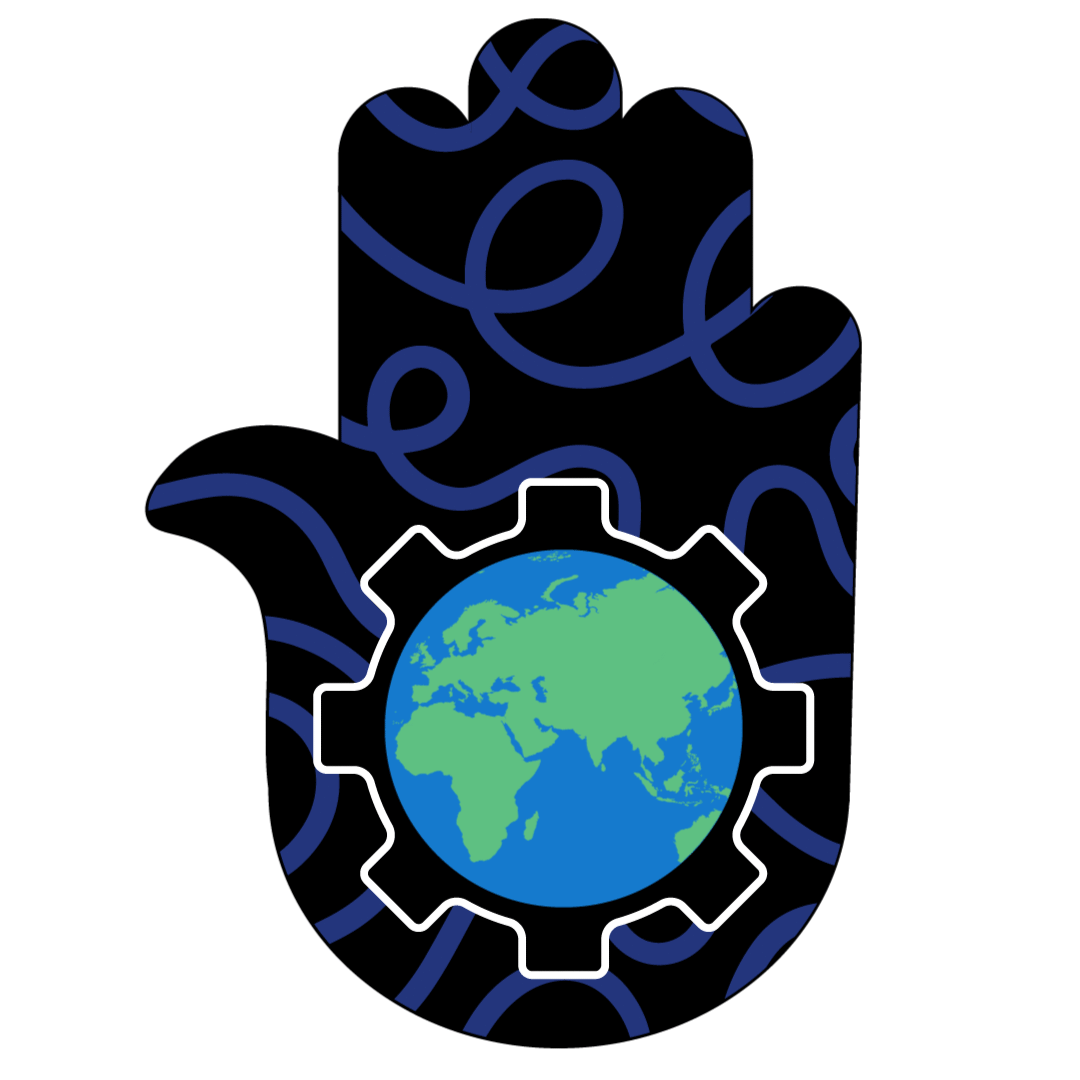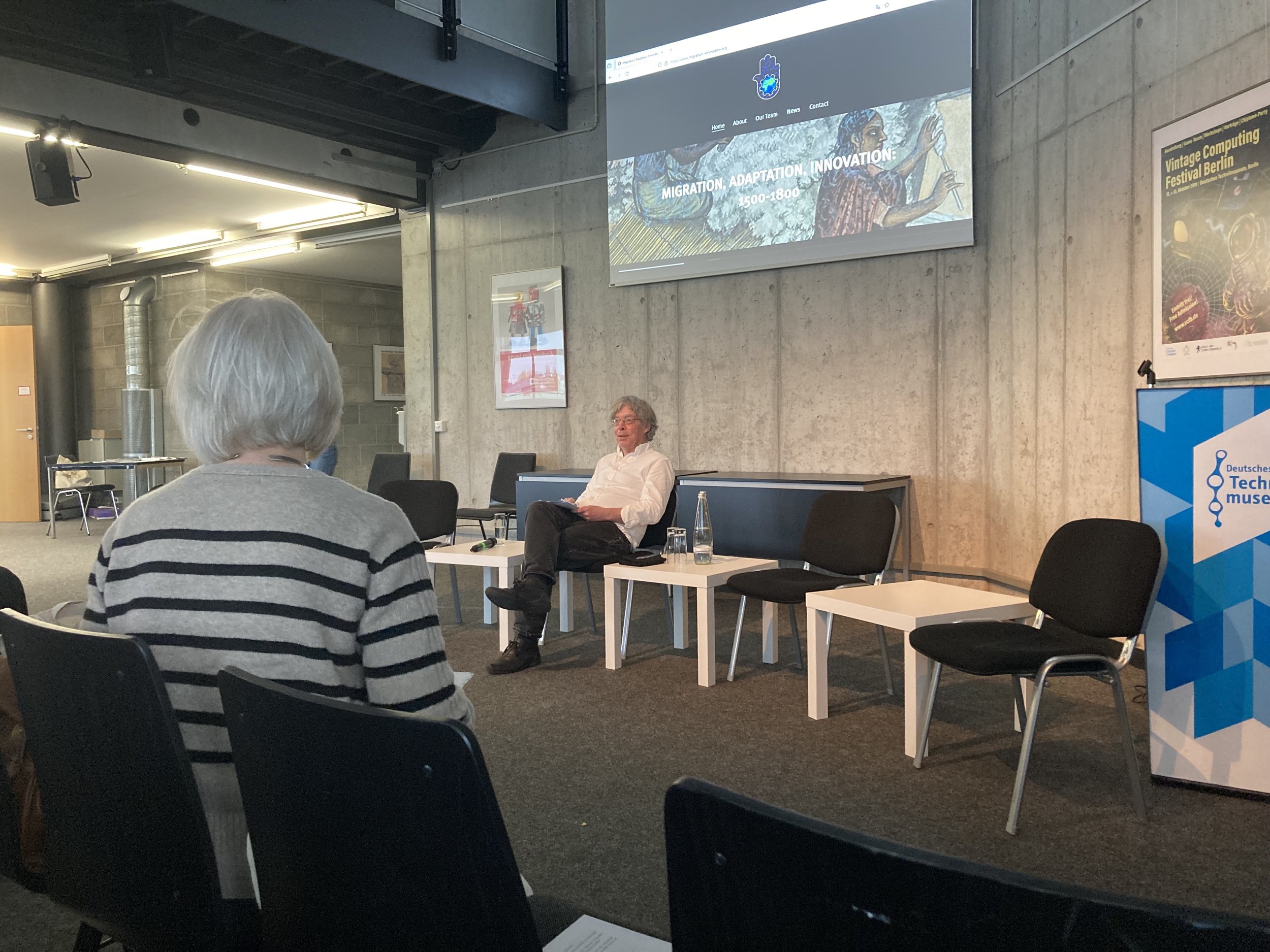Conference Report: ‘Migration – Innovation, Human Mobility & Technological Innovation in History Conference’ April 4–5
On the 4th and 5th of April the project held its Migration – Innovation Conference at the German Museum of Technology. This event sought to bring together expertise on technology and migration in order to examine the link between migration and technological innovation on a global scale during the period 1500–1800. Over the course of the two days, we had 16 academic papers, one museum roundtable, and two practical workshops, forming the basis for incredibly rich discussions and hands-on explorations of key concepts and ideas.
Joachim Breuninger, the director of the German Museum of Technology, officially began the days’ proceedings with his welcome address in which he highlighted the strong links between the topic of the conference and the mission of the museum. This was followed by a short speech by curators Astrid Venn and Claudia Schuster who have been invaluable in the planning of the conference.
The conference kicked off with a keynote panel by Liliane Hilaire-Perez and Francesca Bray who discussed the methodological issues and historiographical legacy that frame research into technological innovation and its links with migration. In doing so, it formed an invaluable starting point that not only gave careful consideration of the issues at hand but also provided a framework for discussions to follow.
The papers in the Success and Failure panel that followed assessed factors involved in the successful movement of technical knowledge and skill. In their paper, Jutta Wimmler and Lukas Wissel looked at the Dutch attempts to establish plantations in the African Gold Coast during the eighteenth century. Rémi Dewière highlighted the difference in experience between French cannon experts in Algiers, and John Styles examined the difference in the reception of textile techniques in France brought by John Holker and John Kay. Taken together, all papers demonstrated that migrant ‘success’ often depended on politics and soft skills more than on simple technical know-how.
The second panel, Extracting Environments, investigated the relationship between migrant skill and the use of natural resources. Floris van Swet showed the interconnection between skill and resources through a focus on Chinese powder makers in Spanish Manila, whilst Kris Lane’s paper explored mining in the Spanish empire through a focus on Alvaro Alonso Barba, thereby highlighting the importance of techniques developed in New Spain for mining in the Iberian Peninsula. Lastly, Philip Hahn’s analysis of the failed transfer of mining knowledge from Saxony to Sumatra showed that knowledge of the physical world was not easily transplanted. Through this, these three papers revealed how physical environments were vital in the application and transferability of a skill.
After a quick coffee break the participants had the opportunity to experience the importance of embodied skills in one of two workshops; papermaking and jewellery making. These workshops were headed by Andrea Grimm and Martin Schröder, both experts in their field who work at the Museum of Technology. The first group was shown various techniques involved in the making of jewellery by Andrea. She led us through numerous machines and workbenches whilst highlighting the importance of touch and sound in the creation of necklaces, earrings, and more. During this we were shown the production of a wide variety of jewellery, from simple tin bear-shaped ornaments (which we got to keep!) to the skill involved in guilloche, a technique well-known from Swarovski Eggs. The second group was given a hands-on introduction to paper making by Martin, a stalwart of the museum for more than thirty years. Thanks to his engaging talk and demonstrations participants learnt how paper is made: from pulping, to macerating, pressing, and drying. Even better, we all got the chance to make our very own paper and take it home!
After getting their hands dirty, the participants were given the opportunity to explore some of the many exhibitions at the museum before we all gathered to have dinner at the museum restaurant. Here we were able to continue the many conversations and discussions begun during the day whilst enjoying a wonderful buffet curtesy of Einhorn catering.
The second day gave us a packed schedule that was started off by the panel Institutions and Networks. Elizabeth Lambourn explored technological exchange through a focus on networks of Jewish merchants stretching between the Mediterranean and South Asia. Oliver Gunning then etraced the networks and institutions that helped or impeded the movement of glass-making experts in eighteenth-century Britain. Finishing the panel was a presentation by Patrick Wallis, Maarten Prak, and José Nieto Sanchéz which showed the different effects and permutations of the apprentice systems across Europe. Through these talks the panel members showcased the central role of social of networks in the facilitation of both migration and technological exchange.
The second panel of the day looked at the influence of empire through a focus on Prisoners of Wars and Coerced Migration. Focussing on the northern borderlands of the Ming empire, Siyen Fei showed the importance of skilled individuals in the creation of demarcations in borderlands. Lisa Hellman critically reframed the concept of innovation through a study of forced migrants and captives in the Central Asian borderlands. The panel was closed by Gul Sen who discussed the role of captive ‘Turkish’ migrants in Central Europe’s creation of otherness and exoticism. The panel gave great insights into the – limits of - agency of captives whilst framing this within the contexts of coercion and the subjective nature of ‘innovation.’
The final academic session looked at the implementation on migrant skill through a focus on Politics, Power, and Migration. Chun Xu’s paper analysed the technological exchange that occurred in Ming-era Guizhou through migration from the Ming heartland. Jenny Bulstrode showed the global importance of enslaved Black precision engineering in Jamaica, as well as the politics of representation in both symbolism and historiography. The panel thus perfectly highlighted the lasting legacy of unequal power dynamics in processes of migration and technological exchange.
These three panels were followed by a roundtable made up of museum specialists from a variety of museums: Ben Jones from the Shipley Museum Gateshead (UK), Danielle Kuijten of Heritage Concepting and Imagine IC (Netherlands), Fabian Schnedler from the Berlin Jewish Museum (Germany), and Jane Whittaker from the Bowes Museum (UK). Together, it they explored issues of museum outreach, collaboration, and co-creation in their interactions with migrant and minority populations. The lively discussion focussed on issues of best practice and how academics and museums can create positive cooperation on these issues.
The conference was closed by Simon Schaffer whose concluding tour de force not only summarized the many papers across the two days, but also identified some of the main issues that linked all papers and talks.
Across both days, the participants were able to catch their breath and further discuss the many papers whilst enjoying pastries and lunch in the conference room, something made even more enjoyable by the wonderful terrace that provided us with beautiful views across Berlin and gave us the opportunity to enjoy the sun. We would therefore like to thank the museum for not only providing us with the perfect venue but also thank all the staff involved who made the conference such a success.
Moving forward, we are looking forward to continuing our cooperation with all participants in developing the field of early modern skilled migration. Not least as we aim to bring the contributions to the conference together in an edited volume which we hope will spur on interest and evoke further discussion on these vital topics.






